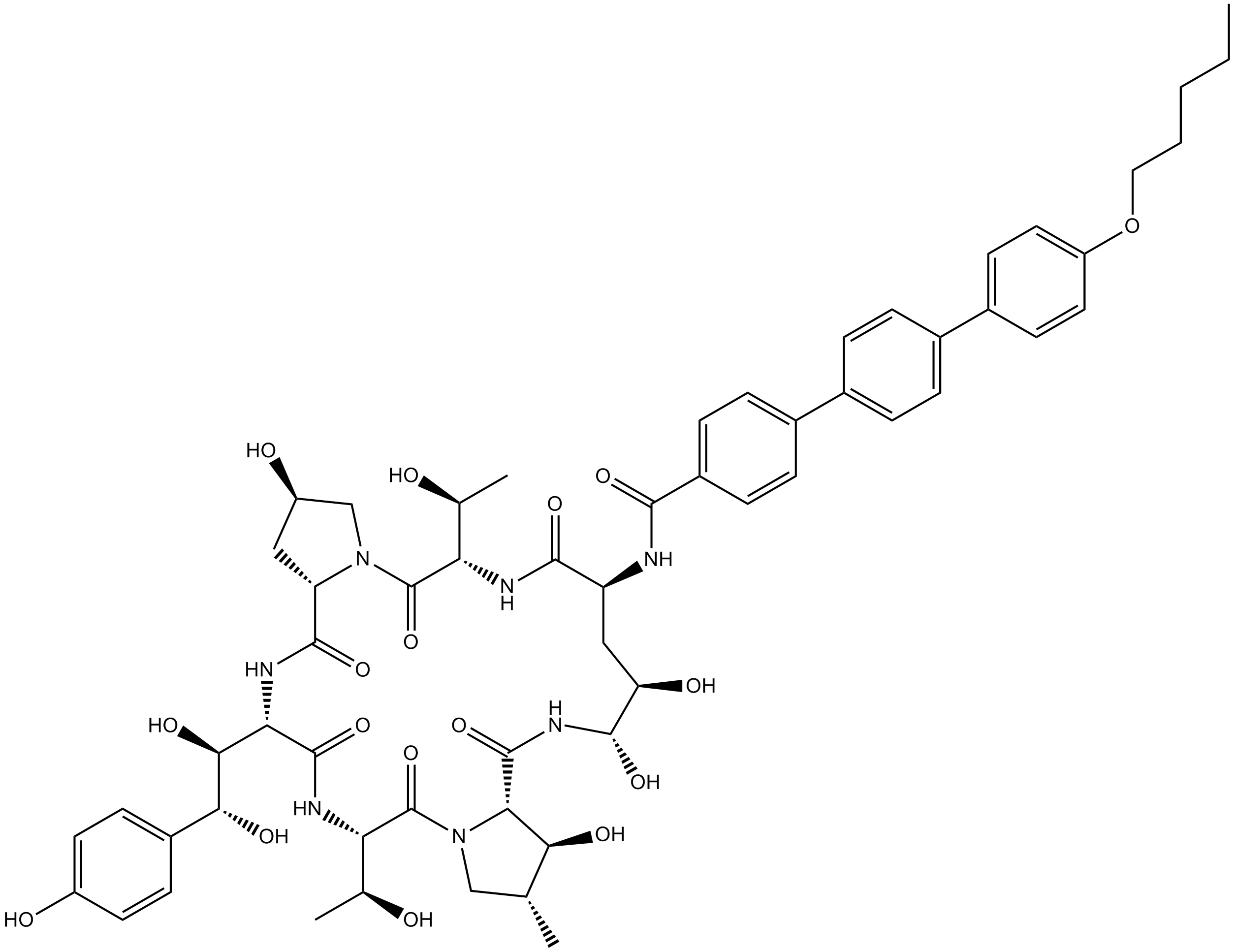Anidulafungin (Synonyms: LY303366, VER-002) |
| Catalog No.GC12754 |
Antifungal drug
Products are for research use only. Not for human use. We do not sell to patients.

Cas No.: 166663-25-8
Sample solution is provided at 25 µL, 10mM.
Anidulafungin (LY-303366)is a synthetic derivative of echinocandin B, used as a drug of antifungal [1].
Anidulafungin has been reported to inhibit systemic isolates of Candida species with the MIC90 values of 0.08μg/ml, 0.32μg/ml, 0.32μg/ml and 5.12μg/ml for C.albicans (n=99), C.glabrata(n=18), C.tropicalis(n=10), and C.parapsilosis (n=10), respectively. In addition, Anidulafungin has been found to be active against Aspergillus species(n=20) with the MIC90 values of ~0.02μg/ml. Apart from these, Anidulafungin has been revealed to inactively restrain with the MIC90 values of >10.24μg/ml and 16μg/ml, for C.neoformans and B.dermatitidis, respectively [1].
References:
[1] Zhanel GG1, Karlowsky JA, Harding GA, Balko TV, Zelenitsky SA, Friesen M, Kabani A, Turik M, Hoban DJ. In vitro activity of a new semisynthetic echinocandin, LY-303366, against systemic isolates of Candida species, Cryptococcus neoformans, Blastomyces dermatitidis, and Aspergillus species. Antimicrob Agents Chemother. 1997 Apr;41(4):863-5.
[2]. Locke JB, et al. Characterization of In Vitro Resistance Development to the Novel Echinocandin CD101 in Candida Species. Antimicrob Agents Chemother. 2016 Sep 23;60(10):6100-7.
Average Rating: 5 (Based on Reviews and 38 reference(s) in Google Scholar.)
GLPBIO products are for RESEARCH USE ONLY. Please make sure your review or question is research based.
Required fields are marked with *




















